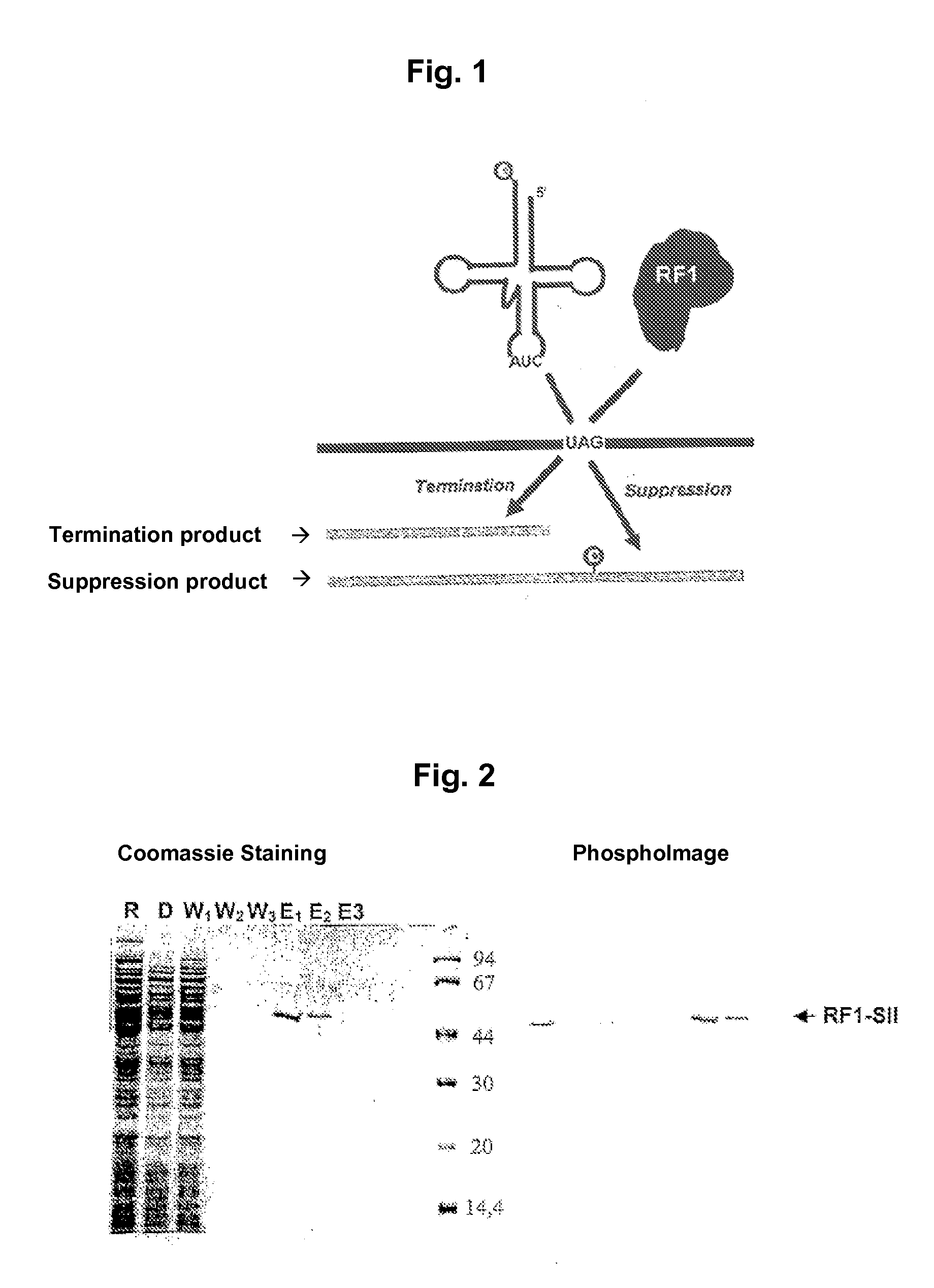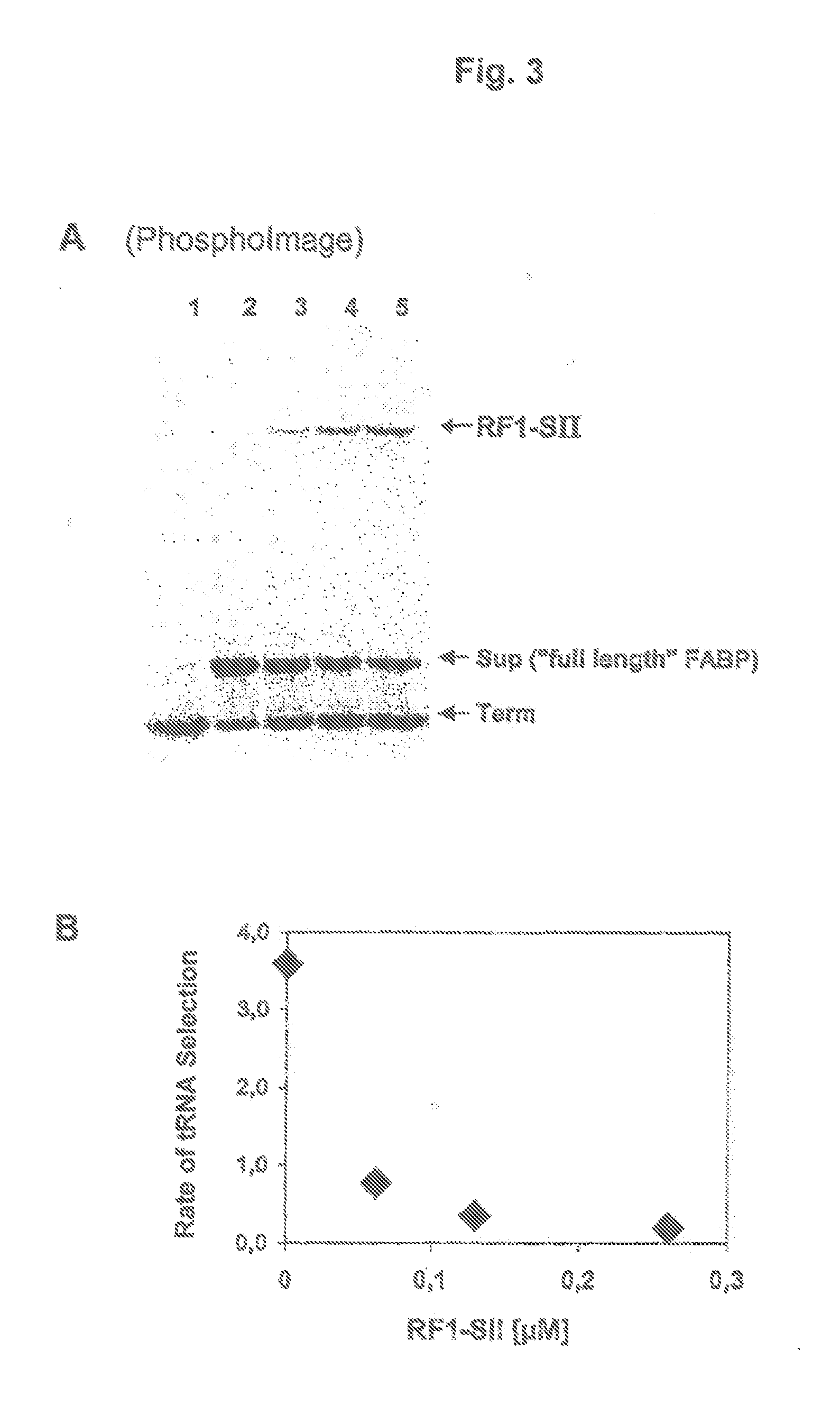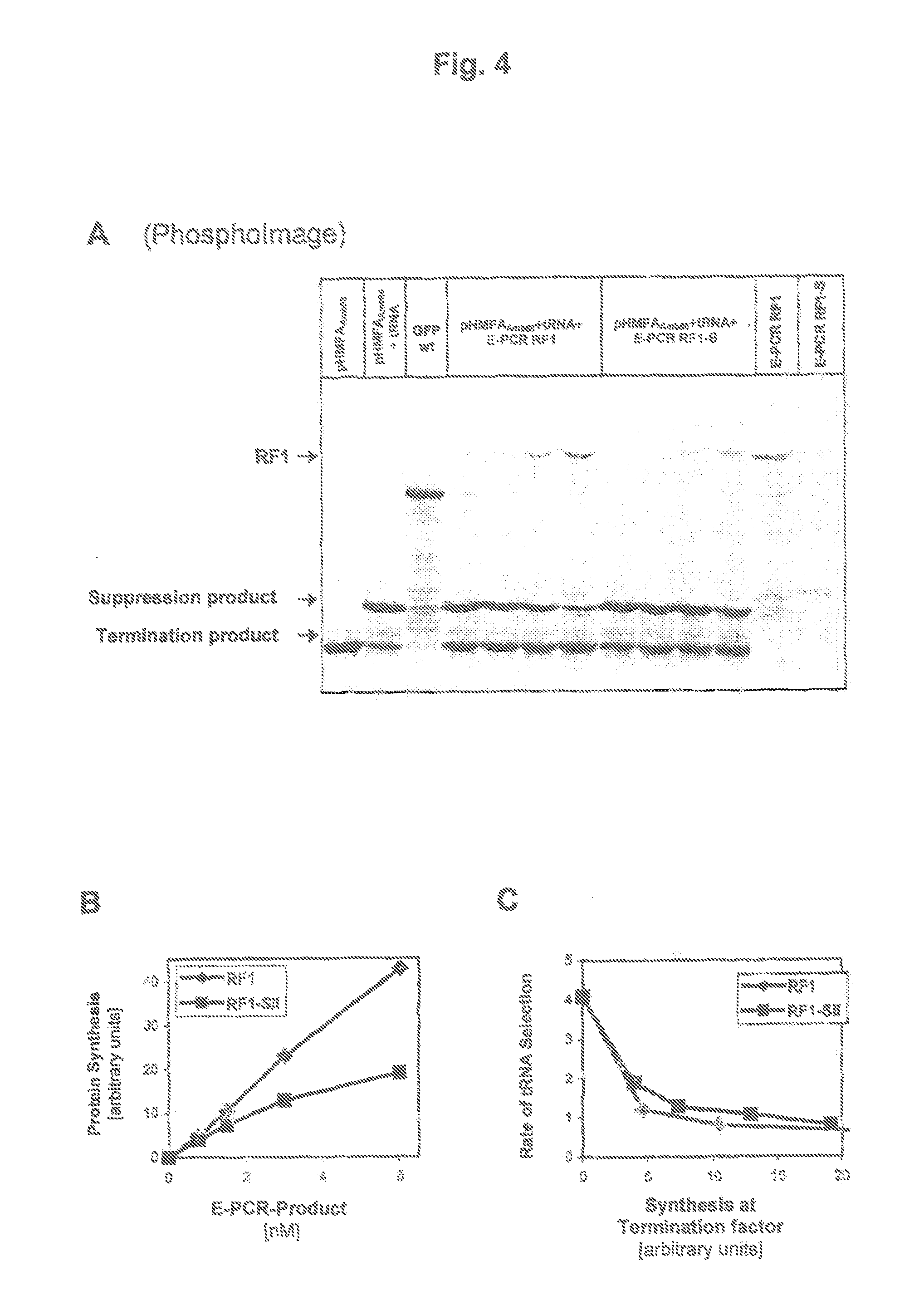Method for the production of a lysate used for cell-free protein biosyntheses
a technology of cell-free protein and lysate, which is applied in the direction of enzymology, microorganism lysis, transferases, etc., can solve the problems of high cost, inability to achieve classic synthesis, and inability to economically solve the problem of cloning,
- Summary
- Abstract
- Description
- Claims
- Application Information
AI Technical Summary
Benefits of technology
Problems solved by technology
Method used
Image
Examples
example 1
Competitive Behavior of RF1 and Amber Suppressor tRNA
[0053]In FIG. 1 there is shown a diagrammatical representation of the competitive behavior of RFI and of an amber suppressor tRNA. Depending upon which of the two molecules pairs with the codon UAG, the protein is terminated or incorporated in an amino acid, and the translation is continued by forming the suppression product.
example 2
Pre-Investigations of the Functionality of RF1-SII: Expression PCR
[0054]Since an inactivation of the termination factor RF1 would be lethal for the organism, the influence of the appended streptag II on the activity of RF1 was investigated. For this investigation, RF1 was translated exclusively of expression PCR products. FIG. 2 shows the preparative expression and purification of RF1-SII. R represents the in vitro translation reaction, D the run number, WI, W2, W3 the wash fractions and E1, E2, E3 the elution fraction.
example 3
Pre-Investigations of the Functionality of RF1-SII: Amber Suppressor Assay
[0055]FIG. 3 shows the functional test of RF1-SII in the amber suppressor assay. The numeral 1 in FIG. 3A designates the execution of the array in a batch without addition of suppressor tRNA. The numerals 2 to 5 are batches with suppressor tRNA (1 μM). Batch 2 does not contain any RF1-SII. The batches 3 to 5 are enriched with purified RF1-SII (3: 0.0625 μM, 4: 0.13 flM, 5: 0.26 μM). FIG. B shows the tRNA selection rate in dependence on the addition of RF1-SII. The “tRNA selection rate” is calculated by determining the molar quantities of synthetic suppression and synthetic termination based on a PhosphoImage, and the ratio of the two values is calculated. The increase of the RF1-SII shares in the batch will lead to an increased production of the termination products. FIG. 3B shows the tRNA selection rate in dependence on the quantities RF1-SII in the batch. The tRNA selection rate drops with the addition of RF...
PUM
| Property | Measurement | Unit |
|---|---|---|
| volumes | aaaaa | aaaaa |
| affinity chromatography | aaaaa | aaaaa |
| fluorescent | aaaaa | aaaaa |
Abstract
Description
Claims
Application Information
 Login to View More
Login to View More - R&D
- Intellectual Property
- Life Sciences
- Materials
- Tech Scout
- Unparalleled Data Quality
- Higher Quality Content
- 60% Fewer Hallucinations
Browse by: Latest US Patents, China's latest patents, Technical Efficacy Thesaurus, Application Domain, Technology Topic, Popular Technical Reports.
© 2025 PatSnap. All rights reserved.Legal|Privacy policy|Modern Slavery Act Transparency Statement|Sitemap|About US| Contact US: help@patsnap.com



